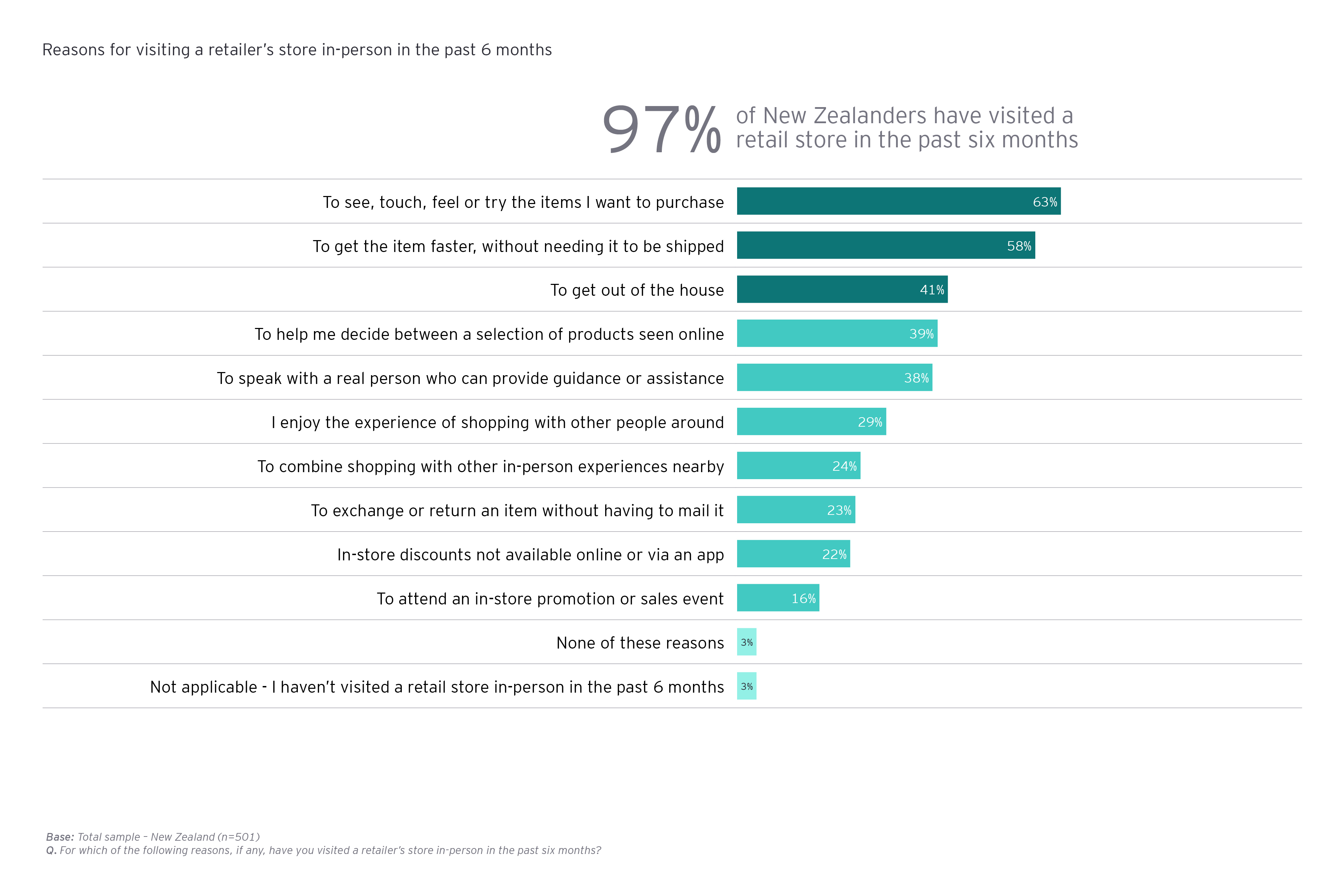E-commerce is at a crossroads
A quarter of New Zealand consumers we surveyed said they were expecting to order fewer products, other than groceries, online in the future. Why is this? Online shopping remains a frustrating experience for many New Zealanders. Expensive shipping was the number one gripe in this wave of research by some margin, noted by 41% of consumers, followed by slow shipping (20%) and a poor website experience (18%).
New Zealand’s supply chain and logistics challenge – a small population stretched along two long, thin islands at the bottom of the world – is undeniably a hard nut to crack. Some brands are already using AI to standardise processes, optimise last-mile delivery and improve the customer experience. But all brands must find new ways to solve this challenge because a growing cohort of consumers are telling them they are no longer buying the e-commerce value proposition.
The motivations for shopping in-store are illuminating. Sure, two-thirds of people said their biggest reason for visiting a retailer in-person was to ‘see, touch, feel or try’ an item. But 41% said they simply wanted ‘to get out of the house’, while 29% said they enjoyed the experience of shopping ‘with other people around’. Bricks-and-mortar retailers who lean into these insights to create human-centred experiences are more likely to prosper, even in a period of consumer constraint.
What do these human-centred experiences look like? Think pop-up stores that allow customers to step into the world of their favourite superhero ahead of a new cinematic release. Think of retailers hosting yoga classes, live music or art exhibitions alongside their racks of clothing. Or think of how augmented reality and virtual try-ons are being used by beauty giants to personalise product selection.




